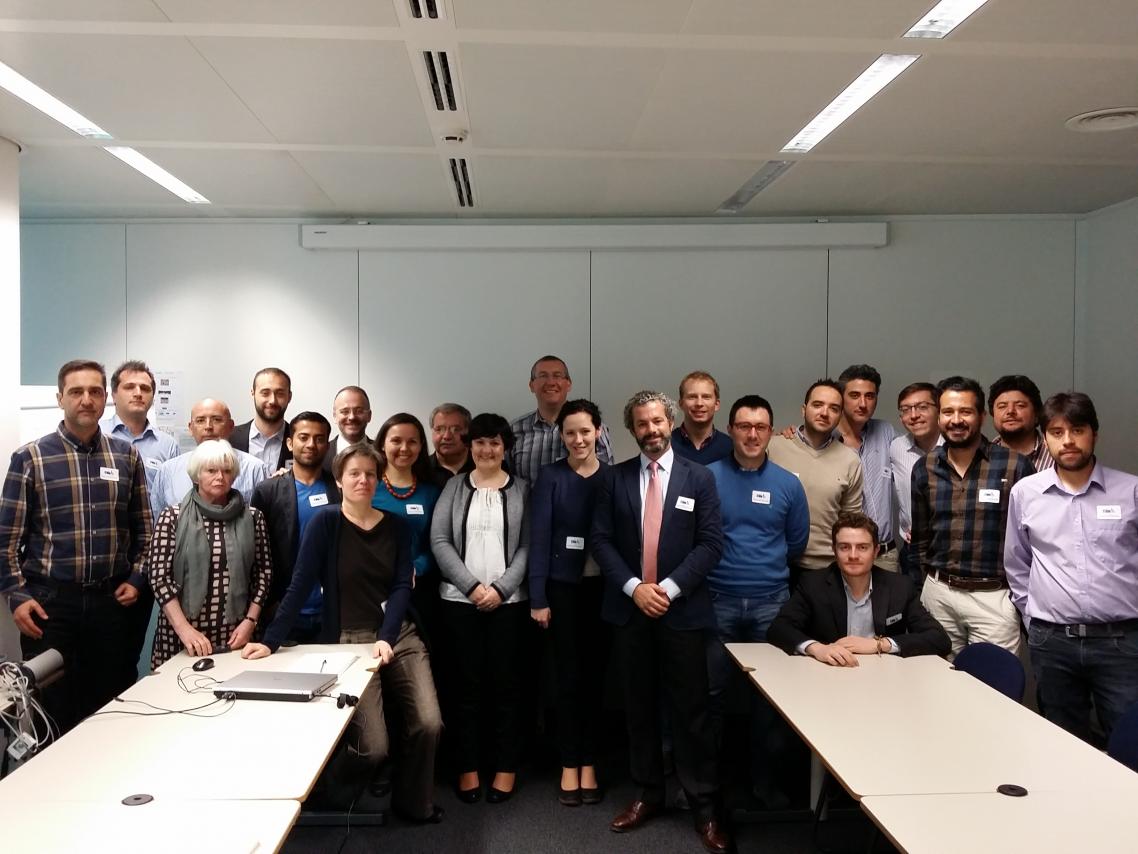BRICKER Project’s first review – All on track despite challenges
youris.com EEIG

Mid-April saw the BRICKER project’s first review, coming after one and a half years of endeavours. Members of the consortium convened in the Belgian capital and delivered presentations in the presence of the Project Officer and Project Technical Advisor.
Since BRICKER started in 2013 the consortium have covered much ground and are well into the monitoring of the demonstration buildings and the tendering rounds for the interventions. Given the diversity of the work carried out at each site, these activities are at different stages. Along the way, we are developing the BRICKER system which will be designed as set of replication guidelines, detailing the challenges, pitfalls, and solutions for adopting energy efficient measures applied to public-owned buildings.
This particular stage of our project inevitably involves a high degree of collaboration among energy developers, building owners and the various project partners across the work packages. The monitoring has already shed light on issues which require alternative solutions. At the Turkish site for example, the Greencast façade has been found to be unsuitable for use in this particular seismic zone. A new product, more expensive but able to withstand earthquakes and high winds, will be adopted but over a smaller surface area in order to keep costs down. Likewise, at the Liège demonstration building PIR form is being applied rather than the original PCM which is more suited to new nearly zero energy buildings.
At this time we are configuring BRICKER systems, both passive and active, in order to optimise system integration for compliance with total primary energy savings targeted under Directive 2004/8/EC. This includes software simulation of cogeneration, solar, geothermal, biomass and adsorption units, leading to single engineered systems at each site. Detailed characterisation of the buildings has been completed at all sites and a set of energy scenarios has been emerging on which the technical requirements and specifications of each cogeneration prototype will be based. Uncertainties remain at all three sites with regard to internal efficiency gains, occupancy profiles, and regulation of indoor air temperature.
All this process requires tight control over the work packages involved and consists of much decision-making about technology solutions and the subsequent tendering rounds. The latter are not only technical but also legal – as health and safety, EC targets, and local public procurement rules all need to be considered. And this set of activities will be of paramount importance for producing the guidelines for replicability elsewhere.
In parallel and closely linked to the above, are costs and procurement issues which have been taking and continue to take centre-stage. In Liège, special attention is being paid to meeting legislation, and some subcontractors are having to look at how highly novel technologies may be integrated. Public tendering rounds have been launched for the manufacture of the technologies earmarked for use within the BRICKER system and later in the year the ORC co-generation prototypes should be ready for shipping. For Spain and Turkey, the parabolic trough collectors will be manufactured and assembled on-site to avoid risk of damage and to keeps costs down.
The project review is the first of three that are scheduled over the 4-year life span of BRICKER. The positive result of this first review is encouraging for such a project at the pre-demonstration stage when everything is moving quickly towards integration and operations.
Contact: BRICKER D&C Secretariat: email: secretariat[a]bricker-project.com
BRICKER is coordinated by Acciona Infraestructuras S.A. and developed in cooperation with 17 other partners: Fundación CARTIF, CEMOSA S.A., EURAC, Fondazione Bruno Kessler, Gobierno de Extremadura-Dirección General de Industria y Energía, Greencom SCRL, Onur Enerji, Ozyegin University, Purinova Sp.zo.o, Steinbeis-Europa-Zentrum of the Steinbeis Innovation gGmbH, Laterizi Gambettola SRL, Province de Liège, Fundación Tecnalia, Université de Liège, youris.com GEIE, Expander Tech S.L., Adnan Menderes University. This project has received funding from the European Union’s Seventh Programme for research, technological development and demonstration under grant agreement No 60907



